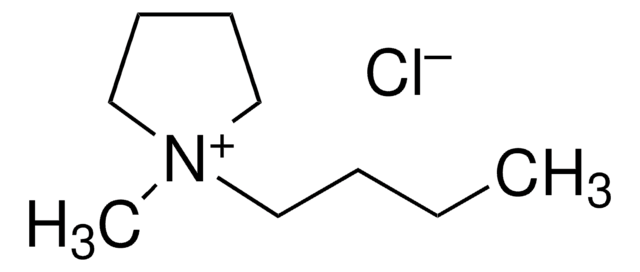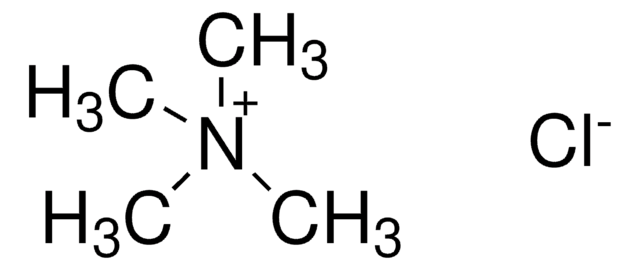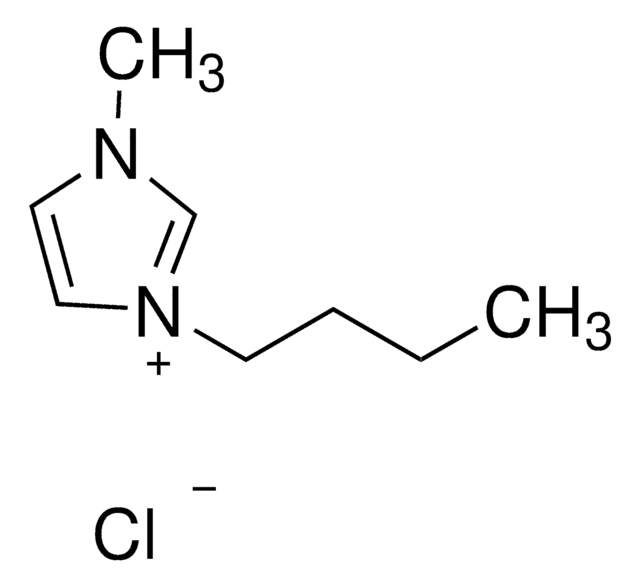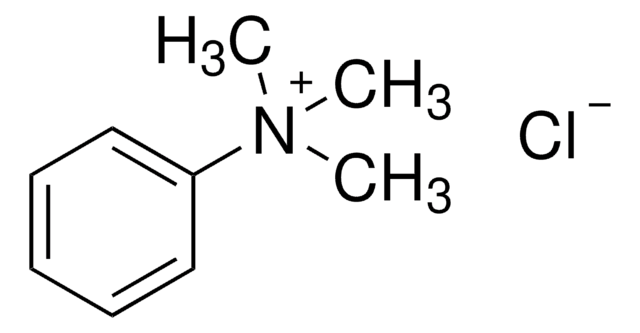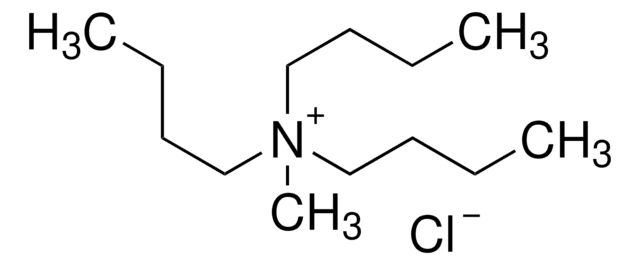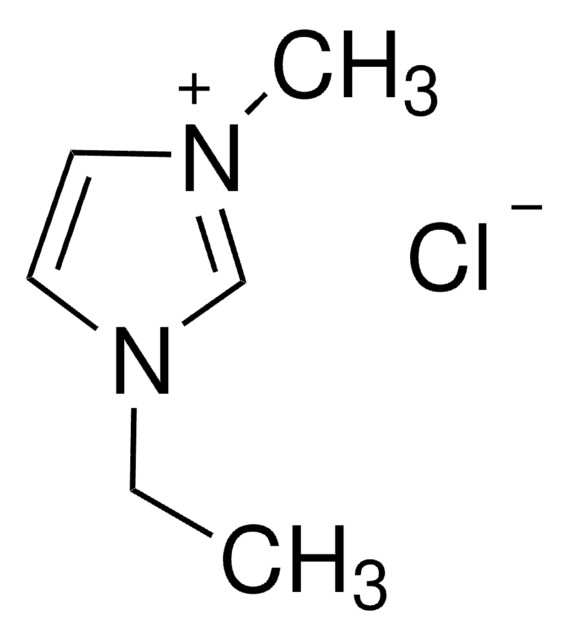713171
1-Ethyl-1-methylpyrrolidinium bromide
99%
Synonym(s):
N-Ethyl-N-methylpyrrolidinium bromide, [EMPyrr]Br
Sign Into View Organizational & Contract Pricing
All Photos(1)
About This Item
Empirical Formula (Hill Notation):
C7H16BrN
CAS Number:
Molecular Weight:
194.11
EC Number:
MDL number:
UNSPSC Code:
12352100
PubChem Substance ID:
NACRES:
NA.22
Recommended Products
Assay
≥98.5% (T)
99%
form
powder
impurities
≤1.0% water
SMILES string
[Br-].CC[N+]1(C)CCCC1
InChI
1S/C7H16N.BrH/c1-3-8(2)6-4-5-7-8;/h3-7H2,1-2H3;1H/q+1;/p-1
InChI key
KHJQQUGSPDBDRM-UHFFFAOYSA-M
General description
1-Ethyl-1-methylpyrrolidinium bromide is an ionic liquid that can be prepared by reacting N-methylpyrrolidine with bromoethane. it is conventionally used as a bromine-sequestering agent (BSA) in zinc/bromine redox flow batteries.
Application
1-Ethyl-1-methylpyrrolidinium bromide may be used in the preparation of 1-ethyl-1-methylpyrrolidinium lactate, a potential solvent for the separation of hexan-1-ene from hexane. It can also be used to prepare 1-ethyl-1-methylpyrrolidinium tribromide. It can be used as a co-catalyst during the cycloaddition of CO2 with different epoxides to form cyclic carbonates in the presence of a nona-vacant Keggin-type tricarbonyl rhenium derivative catalyst.
Signal Word
Warning
Hazard Statements
Precautionary Statements
Hazard Classifications
Muta. 2
Storage Class Code
11 - Combustible Solids
WGK
WGK 3
Flash Point(F)
Not applicable
Flash Point(C)
Not applicable
Personal Protective Equipment
dust mask type N95 (US), Eyeshields, Gloves
Choose from one of the most recent versions:
Already Own This Product?
Find documentation for the products that you have recently purchased in the Document Library.
Customers Also Viewed
Activity coefficients at infinite dilution for organic solutes and water in 1-ethyl-1-methylpyrrolidinium lactate.
Domanska U, et al.
The Journal of Chemical Thermodynamics, 89, 127-133 (2015)
A nona-vacant Keggin-type tricarbonyl rhenium derivative {[PMo3O16][Re(CO)3]4}5- and its catalytic performance for CO2 cycloaddition reactions.
Huo Z, et al.
Royal Society of Chemistry Advances, 5(84), 69006-69009 (2015)
Shiva Rezaei Motlagh et al.
Marine drugs, 18(2) (2020-02-16)
One of the essential fatty acids with therapeutic impacts on human health is known to be omega-3 polyunsaturated fatty acids (PUFA). More lately, ionic liquids (ILs) have received significant attention among scientists in overcoming the disadvantages of traditional solvents in
Synthesis of Cyclic Carbonates from Carbon Dioxide and Epoxides Catalyzed by a Keggin?Type Polyoxometalate?Supported Rhenium Carbonyl Derivate in Ionic Liquid
Huo, Zhiyuan, et al.
ChemCatChem, 6.11, 3096-3100 (2014)
Half-Cell Electrochemical Performance and Cost-Benefit Analysis of Utilizing Hybrid Ionic Liquids in Zinc/Bromine Flow Batteries
Rajarathnam, Gobinath Pillai, and Anthony Vassallo
Electrochemical Society Interface, Meeting Abstracts. No. 5 (2016)
Our team of scientists has experience in all areas of research including Life Science, Material Science, Chemical Synthesis, Chromatography, Analytical and many others.
Contact Technical Service

